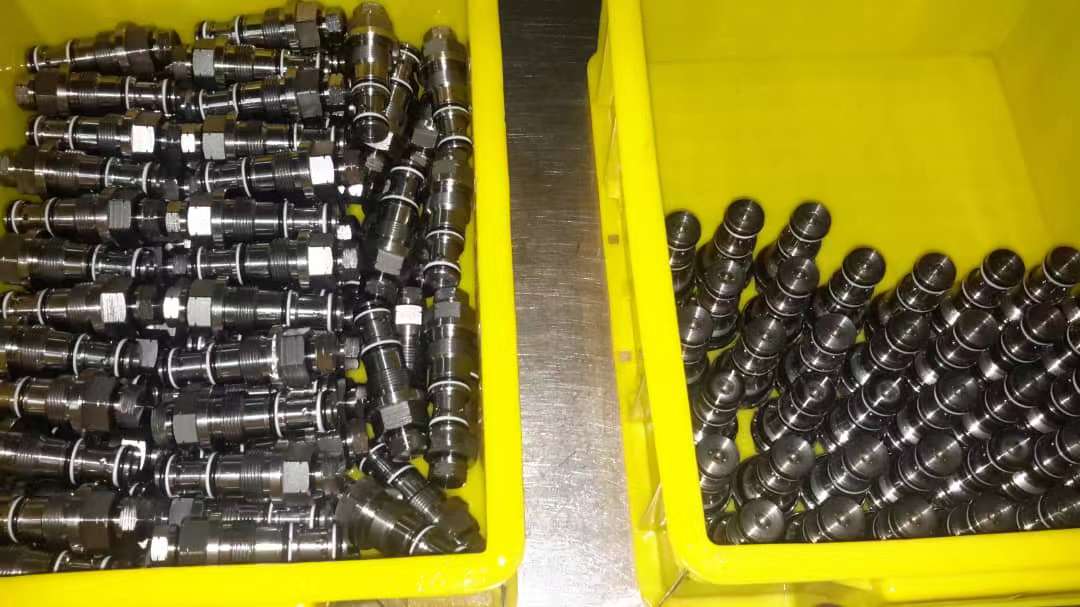

Difference between safety valve and control valve of hydraulic pump
Relief valve
The relief valve is a hydraulic pressure control valve, which mainly functions as pressure relief, voltage regulation, system unloading and safety protection in hydraulic equipment. In the assembly or use of the safety and relief valve, due to the damage of the O-ring, the combined seal, or the looseness of the mounting screws and fittings, it may cause undue external leakage.
If the cone valve or the main spool is worn too much, or the sealing surface is not well contacted, it will cause excessive internal leakage and even affect normal operation.
Main function
Constant pressure overflow: In the metering pump throttle regulation system, the metering pump provides a constant flow. When the system pressure increases, the flow demand is reduced. At this point, the relief valve opens, allowing excess flow to overflow back to the tank, ensuring the inlet pressure of the relief valve, ie the pump outlet pressure is constant (the valve port often opens with pressure fluctuations).
Regulating effect: The relief valve is connected in series on the return line, the relief valve generates back pressure, and the smoothness of the moving parts increases.
System unloading function: a small flow solenoid valve is connected in series at the remote control port of the overflow valve. When the electromagnet is energized, the remote control port of the overflow valve is connected to the fuel tank, and the hydraulic pump is unloaded. The relief valve is now used as an unloading valve.
Safety protection: When the system is working normally, the valve is closed. Only when the load exceeds the specified limit (system pressure exceeds the set pressure), the overflow is turned on, and the overload protection is performed, so that the system pressure is no longer increased (usually the set pressure of the relief valve is 10% to 20% higher than the maximum working pressure of the system). ).
In practical applications, it is generally used as an unloading valve, as a remote pressure regulating valve, as a high and low pressure multi-stage control valve, as a sequence valve for generating back pressure (string on the return road).
The relief valve generally has two structures: 1. A direct-acting relief valve. 2. Pilot operated relief valve.
The main requirements for the relief valve are: large pressure regulation range, small pressure regulation deviation, small pressure oscillation, sensitive action, large overload capacity and low noise.

Control valve
The control valve consists of two main components: the valve body assembly and the actuator assembly (or actuator system), divided into four series: single seat series control valve, two-seat series control valve, sleeve series control valve And self-operated series control valves. Variants of the four types of valves can result in a number of different applicable structures, each having its particular application, features, advantages and disadvantages. Although some control valves have a wider range of applications than other valves, the control valves are not suitable for all operating conditions to jointly create the best solution for enhanced performance and reduced cost.
Types
There are many types of valve bodies for regulating valves. Commonly used are straight-through single-seat, straight-through two-seat, angular, diaphragm, small flow, three-way, eccentric rotation, butterfly, sleeve, spherical and so on. In the specific choice, you can make the following considerations:
1. Mainly based on factors such as selected flow characteristics and imbalance forces.
2. When the fluid medium is a suspension containing a high concentration of abrasive particles, the internal material of the valve is tough.
3, due to the corrosive nature of the medium, try to choose a simple valve.
4. When the temperature and pressure of the medium are high and the change is large, the valve and the material of the valve seat should be selected to be small in temperature and pressure.
5. Flashing and cavitation are only produced in liquid media. In the actual production process, flashing and cavitation will form vibration and noise, shortening the service life of the valve, so the valve should be prevented from flashing and cavitation when selecting the valve.
Characteristics
1. There are various types of control valves, and their application occasions are different. Therefore, the type of control valve should be properly selected according to the requirements of the process.
2. Pneumatic control valves are divided into two types: gas opening and gas closing. The gas-opening control valve is closed in the event of a fault and the gas-closed control valve is opened in the event of a fault. Some auxiliary equipment can be used to form the retaining valve or to make the control valve self-locking, that is, the valve opening before the control valve remains faulty in case of failure
3. The method of gas opening and gas closing can be realized by the combination of positive and negative actuators and the combination of positive and negative valves. When using the valve positioner, it can also be realized by the valve positioner.
4. Various control valves have different structures and each has its own characteristics.